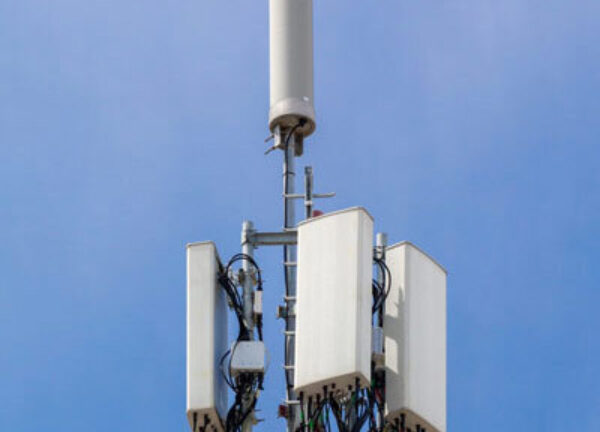- About
- Network
- News
- Initiatives
- Events
- Publications
- Blog

Schools Across California Access High-speed Broadband Service for the First Time
Categories K-12 RENS & NRENS
Teachers in the El Tejon Unified School District, which serves the mountain communities in southwestern Kern County, faced daily challenges caused by inadequate Internet connectivity. Corey Hansen was unable to enter grades or attendance online if another teacher at the school was also trying to do so. Any media used in instruction had to be downloaded off-site and brought to school on a flash drive. Students were unable to access Google accounts at school to complete assigned work. During state testing, the school was limited to having 20 students at a time in the computer lab. As a result, the testing window was longer than a month, which meant students were not performing at their best. It also meant that the district office, school office, and classroom teachers could not be online at the same time, which crippled the entire district.
Challenges like these have inspired the creation of the Broadband Infrastructure Improvement Grant (BIIG) program, an initiative funded by the California State Legislature to connect schools in California to CENIC's California Research and Education Network (CalREN), a high-capacity broadband network. Through a partnership between the K-12 High Speed Network (K12HSN), the California Department of Education, and CENIC, work is now underway to upgrade Internet connectivity to 326 of the hardest-to-serve schools. Most of these schools will receive a symmetrical broadband connection of 1 Gbps. In addition, more than 80% of these upgrades will employ fiber-optic solutions, ensuring that these schools will have the fiber infrastructure necessary to increase capacity when needed. Approximately 92,000 students will benefit from connectivity upgrades.
Benefits
When these obstacles are overcome, and connectivity is complete, the impact on the lives of teachers and students will be significant. After the connectivity upgrade was completed at the El Tejon Unified School District, Corey Hansen reflected on the impact it had on teaching and learning in her school. “I can now have an entire class on their Chromebook computers, accessing reading and language arts materials. Comprehension questions, note taking, critical thinking, questioning, and communication with parents have all improved. Students can use their computers on a daily basis for writing, research, note taking, and other essential aspects of their academic work. I am able to run an after-school tutoring program using an online standards-based tutorial that can individualize and accelerate student learning.”
Students have noticed the upgraded connection speeds as well. They are excited and willing to work on their Chromebooks and enthusiastic about participating in daily lessons. Because the improvements have allowed for immediate teacher feedback to both students and parents, there is a greater knowledge of what is required and expected. Parents experience the benefits of a better connection to the school by being able to readily access the curriculum and view student progress.
Implementation
Multiple steps need to be coordinated among multiple parties to successfully install new broadband circuits. Installations need to be coordinate with K12HSN, CENIC, the service provider, the County Office of Education, and school technology and facilities staff. Timelines need to be aligned and all parties need to understand the steps. Internet circuit installation can take 90 days. If fiber infrastructure needs to be created, it can take 120 to 210 days, depending on the challenges encountered.
Work begins when a school demonstrates to K12HSN that it qualifies for inclusion in the Broadband Infrastructure Improvement Grants program. CENIC then seeks bids for telecommunications services and arranges for federal E-rate discounts and California Teleconnect Fund discounts on behalf of the school. Through a competitive request for proposals process, CENIC obtains and evaluates quotes for service from Internet service providers, which include connectivity speeds, hardware needs, and costs. Once these quotes for service are approved by a K-12 stakeholder group and the school district, CENIC prepares the specifications for the circuit and places an order with the service provider.
The service provider then conducts a site survey and completes any preparatory work necessary to ensure they can deliver service to the site. Especially at the hardest-to-connect schools, the service provider sometimes needs to undertake special construction to deliver the circuit, such as digging a trench to run fiber to a school site. One of the biggest benefits of the BIIG program is that grant funds cover the one-time cost of special construction, which can be significant for many schools.
In addition, the school must ensure that the room where the circuit will be delivered meets minimum requirements and that all necessary local area network equipment is in place. Often, schools have a very limited capacity to prepare their site. K12HSN steps in to provide assistance to the site. School personnel can point out where the circuit should be delivered and help uncover environmental issues, but often do not have the technical expertise to prepare the site, at which point an outside resource needs to be brought in to assist.
Continuing Challenges
Despite significant progress statewide, significant challenges remain for some communities. Robert Jackson, director of technology for the Trinity County Office of Education, still faces tremendous challenges in bringing high-speed broadband to schools in his remote and rural county. Because of its small population base and mountainous topography, Trinity County has very little fiber infrastructure and few Internet service providers to support high-speed broadband.
When fiber is not an option, microwave connectivity is a less-desirable alternative. Yet even this is a challenge in Trinity County; Cox Bar Elementary sits in a topographic bowl with no line of sight to any mountain. Antennas can be mounted in trees as a last resort, but, on US Forest Service and Native lands, it is nearly impossible to get permission to put up an antenna. Even when it is possible, it is expensive, and rockslides and weather present challenges in maintaining any terrestrial construction.
Trinity County is not the only region of the state where obstacles to improved Internet connectivity persist. From telephone poles that cannot hold any more fiber to granite boulders in the fiber’s path, CENIC staff are presented with complex problems to solve every day. For example, in Sonoma County, the commercial service provider has been working since April 2015 to obtain right-of-way access to run fiber to a rural school, but has been unable to obtain permission from private landowners to place fiber on existing power poles on their land. And in Kern County, one of the schools to be served is on a military base, which makes implementation difficult, due to the complexity of coordinating with military-sanctioned contractors.
Across California, the digital divide is being closed one school at a time. But in some areas, the challenges to high-speed broadband connectivity are so significant they can not be addressed by the schools working alone. It will take the collaboration of many institutions and individuals in a community to solve this problem. In addition, project leaders know that it is not enough simply to upgrade the connectivity to schools. Young people learn within their communities — at home, in libraries, and in other public spaces.
Work on the Broadband Infrastructure Improvement Grant program has led all parties to ask: How do we bring high-speed broadband to whole geographies so that students, teachers, families, and community members can learn anytime, anywhere? This question will guide work in the future until all communities in California have equal access to high-speed broadband and the opportunities it creates.
Related blog posts
Wireless on the Edge: Connecting Hard-to-Serve Areas
Hard-to-reach areas may require wireless edge networks to connect to a middle-mile backbone. Tradeoffs in frequency, license status, and power can make it challenging to determine the best solution.
Responding to disasters: the CENIC community’s role in response and recovery
Fires, floods, earthquakes, and now pandemics have become part of the landscape for Californians in this second decade of the 21st Century.


